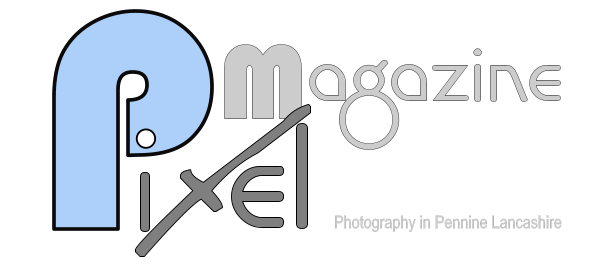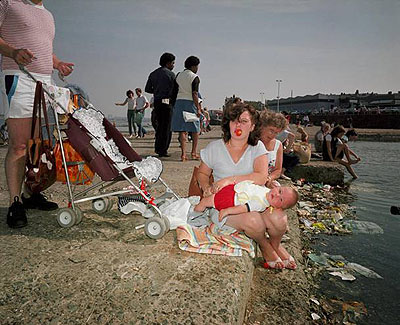Designed for top performance, the K-3 provides an array of
outstanding features, including high-resolution image reproduction with
approximately 24 effective megapixels; a 27-point AF system; high-speed
continuous shooting at approximately 8.3 images per second; high-precision
exposure control with a newly designed 86,000 pixel RGB light-metering sensor;
a new, large, high-resolution LCD monitor; and an optical viewfinder with the
largest, brightness subject image in its class.
The new anti-aliasing simulator — a highly innovative
function developed specifically for the K-3 — allows the user to effectively
minimise moiré without the installation of an optical anti-aliasing filter in
the camera, providing a choice of filtered or filter-free shooting for a given
scene or subject.
The K-3 also offers greatly-enhanced movie-recording
features and smartphone-accessible functions. The time-proven dustproof,
weather-resistant body construction ensures dependable, flawless performance in
the field.

The PENTAX K-3 Premium Silver Edition* will also be
simultaneously launched—but in a limited run of just 2,000 units around the
world. This limited-edition model has a silver body and silver grip, making it
a perfect match for the silver versions of the high-performance Limited-series
lenses, designed for unrivalled image rendition. This special package also
includes an exclusive leather strap and a spare battery.
* The specifications of this limited-edition model are
identical to those of the PENTAX K-3.
Main Features
1. High-resolution images produced by a brand-new sensor
with approximately 24 effective megapixels and a new imaging engine
The K-3 is equipped with a new APS-C-size CMOS image sensor
(23.5mm×15.6mm) with approximately 24 effective megapixels. By coupling this
sensor with a newly developed PRIME III imaging engine with high-efficiency
noise and image processing capacities and an anti-aliasing filter-free design,
the K-3 delivers high-resolution, fine-gradation images. It also offers a top
sensitivity of ISO 51200, for taking detailed images under poor lighting
conditions, and to simplify handheld shooting of nightscapes.
2. PENTAX-original SR mechanism to reduce moiré as
effectively as an optical anti-aliasing filter
(1) In-body SR mechanism
The K-3 features a PENTAX-developed SR (Shake Reduction)
mechanism that can be used with any compatible PENTAX interchangeable lens.**
Thanks to the addition of an SR-dedicated servo controller and an increase in
the magnetic force driving the SR unit, this mechanism assures more stable,
effective camera-shake compensation than ever before.
(2)The World’s-first***, innovative anti-aliasing simulator
function
Newly developed for the K-3, the anti-aliasing simulator****
applies microscopic vibrations to the image sensor unit at the subpixel level
during image exposure, generating the same level of moiré-reduction effect as
an optical anti-aliasing filter. Unlike an optical anti-aliasing filter that
always creates an identical result, this innovative simulator allows the user
not only to switch the anti-aliasing filter effect on and off, but also to
adjust the level of the effect. This allows the user to set the ideal effect
for a particular scene or subject.
(3)User-assisting shooting functions
The SR unit’s flexible design, which tilts the image sensor
unit in all directions, is one reason why the K-3 can offer a host of handy
shooting functions, including auto level compensation, image-composition
fine-adjustment, and ASTRO TRACER, which simplifies advanced astronomical
photography in combination with the optional O-GPS1 GPS Unit.
** Lenses compatible with this mechanism: K-, KA-,
KAF-, KAF2-, and KAF3-mount lenses; screw-mount lenses, (with adapter); and
645- and 67-system lenses (with adapter). Some functions may not be available
with all lenses.
*** World’s first as an interchangeable-lenscamera to carry
this functionality as of October 2013. (Based on RICOH IMAGING COMPANY’s
research)
**** This function is most effective with a shutter speed of
1/1000 second or slower. This function is not available during HDR
shooting.
3. Newly designed SAFOX 11 AF module with 27 auto focus
points
The K-3 features a new SAFOX 11 AF module with an expanded
image-area coverage using 27 AF sensors (25 cross-type sensors positioned in
the middle). The centre sensor and two sensors just above and below it are
designed to detect the light flux of an F2.8 lens, making it easy to obtain
pinpoint focus on the subject when using a large-aperture lens. This newly
developed AF module is highly light-sensitive and covers a wide AF working
range of –3EV to +18EV. Since the AF module takes data from RGB light sensors
into calculation to optimise AF operation, the K-3 also provides such advanced
functions as high-accuracy auto-focusing during the shooting of fast-moving
subjects, and the zone-select AF mode to automatically select the best possible
in-focus point within a designated nine-sensor zone.
4. High-precision exposure control with a new PENTAX
Real-Time Scene Analysis System
The K-3 is equipped with newly introduced PENTAX Real-Time
Scene Analysis System that consists of approximately 86,000 pixel RGB light-metering
sensor and improved algorithm, which allows it to not only control the exposure
with extreme accuracy, but also to utilise the data taken in by the
light-metering sensor to further enhance the accuracy of auto-focusing and
white balance adjustment.. This has expanded the measurable minimum luminance
level to as low as –3EV. By detecting the type of scene or subject using the
light sensor, the K-3 can not only select the exposure settings that are more
consistent with the photographer’s creative intentions, but can also make more
precise distinction between the main subject and the background to
improve the accuracy of flash discharge level.
5. High-speed continuous shooting with a maximum speed of
approximately 8.3 images per second
The K-3 continuously records as many as 22 images in the RAW
format or 60 images in the JPEG format in a single sequence, at a maximum speed
of approximately 8.3 images per second. This has been made possible through the
use of several innovative technologies, including a high-speed, high-accuracy
control mechanism that regulates the shutter, mirror and diaphragm
independently; a damper mechanism that effectively minimizes mirror shock; and
a high-speed data transmission system incorporated in the PRIME III imaging
engine.
6. Optical viewfinder with new optics, to provide a nearly
100% field of view and a larger, brighter viewfinder image
The K-3’s glass prism has been treated with a new coating
designed to improve reflection, resulting in a much brighter viewfinder image.
The eyepiece optics have been completely redesigned to assure an approximately
0.95-times viewfinder magnification to provide a broader image field, making it
easier for the photographer to confirm the subject’s focusing status and
compose the image.
7. Full HD movie recording with creative tools
The K-3 captures beautiful Full HD movie clips (1920 x 1080
pixels; 60i/30P frame rate) in the H.264 recording format, which assures
flawless, high-quality movies even with fast moving subjects. It also comes
equipped with a stereo mic terminal for external microphone connection and a
headphone terminal. The user can even adjust the audio recording level manually
and monitor sound levels during microphone recording. In addition to a variety
of creative special-effect modes,the K-3 also provides an upgraded interval
movie mode, which captures a series of 4K-resolution movie clips (3840 x 2160
pixels) at a fixed interval.
8. Smartphone-support functions
By installing the optional FLU CARD FOR PENTAX 16GB
memory card in the K-3, the user can release the K-3’s shutter, check the
live-view image, and browse and download the images recorded on the card using
a smartphone.
9. Large, easy-to-view 3.2-inch LCD monitor with
approximately 1,037,000 dots
l,The K-3 features a newly designed 3.2-inch high-resolution
LCD monitor with approximately 1,037,000 dots (in a 3:2 aspect ratio) on its
back panel. In addition to its wide-view design, this monitor also features a
protective tempered-glass front panel for added durability, and a unique
construction in which the air space between LCD layers is eliminated,
effectively reducing the reflection and dispersion of the light to improve
visibility during outdoor shooting. During playback, the K-3 even allows the
user to check recorded images at life-size magnification.
10. Compact, solid body with dustproof, weather-resistant
construction; perfect for outdoor shooting
The K-3’s exterior casing is made of sturdy yet lightweight
magnesium alloy. Thanks to the inclusion of 92 special sealed parts in the
body, it boasts a dustproof, weather-resistant and cold-resistant construction,
assuring solid operation at temperatures as low as -10°C. It also features a
dependable, durable shutter unit that can handle some 200,000 shutter releases.
Despite all these features, the K-3 has been designed to be compact and
manoeuverable, assuring exceptional operability when shooting outdoors.
11. Other features
·
Dual SD card slots for memory card flexibility
(compatible with SDXC UHS-1 speed class in SDR104 bus speed mode)
·
DRII (Dust Removal II) mechanism for effective
elimination of dust on the image sensor using ultrasonic vibration
·
HDR (High
Dynamic Range)
shooting mode with RAW-format data filing
·
PENTAX-invented hyper control system for quick,
accurate response to the photographer’s creative intentions
·
Mode dial with a choice of lock mechanism
engagement (ON or OFF)
·
Redesigned, resized grip for steady, comfortable
hold of the camera
·
Compensation of various parameters: lens
distortion, lateral chromatic aberration, brightness level at image-field
edges, and fringe effect (available in RAW-format processing only)
·
Compatibility with Eye-Fi wireless LAN memory
cards
·
Compatibility with USB3.0-standard interface
accessories, with HDMI (type D) terminal
·
Newly designed Digital Camera Utility 5 software
included, to provide upgraded programs and enhanced overall performance
Optional Accessories
D-BG5 Battery Grip
Exclusively designed for the PENTAX K-3, this optional
battery grip accepts six AA-size batteries as well as the standard lithium-ion
rechargeable battery. It provides an extra set of shutter-release, AE-lock, AF,
ISO, exposure-compensation and green buttons, as well as a preview lever and
dual electronic dials to facilitate vertical-position shooting. It features the
same dustproof, weather-resistant construction as the K-3 body.
O-FC1 FLU
CARD FOR PENTAX 16GB
Newly developed for the PENTAX K-3, this SDHC memory card
offers wireless LAN connection to a compatible smartphone. Via a designated Web
browser, the user can inspect a live-view image, release the K-3’s shutter,
shift the AF sensor point, and check images recorded on the card using the
smartphone screen.
O-ST1401 Camera Strap
This versatile camera strap measures four centimetres wide
and 50 centimetres long — a very functional length when the photographer wants
to wrap it around a hand or wrist. It comes with a PENTAX logo, in a choice of
black or red.
Note: Designs and specifications are subject to change
without notice.
RRP
K-3 body - £1,099.99
K-3 single + DA L 18-55mm WR -
£1,199.99
K-3 body + DA L 18-55mm WR & DA L 50-200mm WR - £1,349.99
K-3 Premium + DA 18-135mm WR - £1,449.99
K3 Silver Limited Edition - £1,399.99
The K-3 is available from November 2013.
























